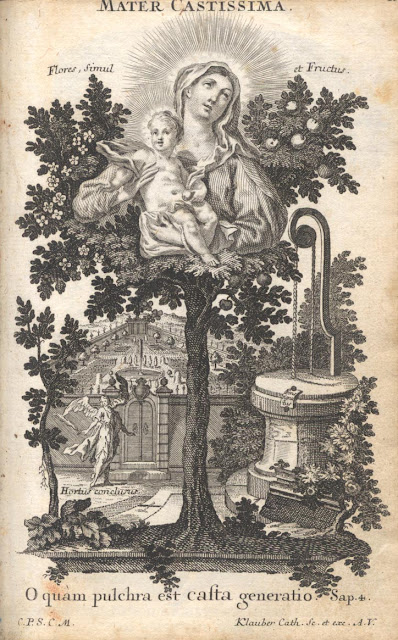Where worlds of myth, belief, fantastic and imagination collide. A pastiche of fantastical, philosophical and psychedelic offerings. Curated by Veronika Nasamoto. Most pieces do not offer opinion but are resources for further development of stories, comics or novels; and general interest pieces.
Sunday, October 31, 2010
Danza Macabra
Dance of Death, also variously called Danse Macabre (French), Dansa de la Mort (Catalan), Danza Macabra (Italian and Spanish), Dança da Morte (Portuguese), Totentanz (German), Dodendans (Dutch), is a late-medieval allegory on the universality of death: no matter one's station in life, the Dance of Death unites all. The Danse Macabre consists of the dead or personified Death summoning representatives from all walks of life to dance along to the grave, typically with a pope, emperor, king, child, and labourer. They were produced to remind people of the fragility of their lives and how vain were the glories of earthly life.[1] Its origins are postulated from illustrated sermon texts; the earliest recorded visual scheme was a now lost mural in the cemetery of the Holy Innocents in Paris dating from 1424-25.
More information en.wikipedia.org/wiki/Danse_Macabre
Tuesday, October 26, 2010
Hallow November's Eve - the Celtic Myth
For further reading on Druids:
T. D. Kendrick, The Druids (Methuen, 1927): Nora Chadwick, The Druids (University of Wales Press, 1966); Stuart Piggott, The Druids (Thames and Hudson, 1968); Miranda J. Green, Exploring the World of the Druids (Thames and Hudson, 1997); Andrew Fitzpatrick, 'Druids: Towards an Archaeology', in Chris Gosden et al. (ed.). Communities and Connections (Oxford University Press, 2007).
Further articles can be found by visiting History Today:
Hallowed: used of the name of the Father of Lights. First petition in the Lord's prayer - revered or counted holy. It is a prayer that unworthy conceptions of God and of His character may no longer prevail among men (Godet). The child of the day beseeches Him to manifest with effect His holy character, in the conscience of men so that we can unite with the seraphim in the anthem of adoration "Holy, Holy, Holy".
Feast of All Saints (All Hallow's Day) 1st November: to commemorate all Christian saints and martyrs.
Friday, October 15, 2010
Mystery of Death
Death where is your sting?
"O unhappy man! Condemned to draw thy breath in this gruesome body of death."
Pia Desideria, Hermann Hugo, Antwerp, 1659.
"Snuff out the lamp of the wicked, tear him from the security of his tent and march him off to the prince of terrors." (Bible)
"But a Maskil of Ethan asks: What man can live and not see death, or save himself from the power of the grave?" (Psalm)
Thursday, October 7, 2010
Amazon's Mechanical Turk - or just making monkeys of us all!
So from mechanical turk in the 19th century, to Amazon's global outsourcing 'providers', what does the future hold? Galvanised corpses?
Friday, October 1, 2010
Song of Solomon
Song of Solomon, a widely read and celebrated romantic poem in Western literature, considered biblical erotica.
The Song of Songs of Solomon is an echo from the time before sexual love was relegated to the realm of the profane: which is why it has been so difficult for so many people to read it as a poem that is both sexual and spiritual.
As the Christian gospel spread throughout the surrounding Hellenic culture, it was blended with a dualism of body and spirit that was very uncharacteristic of Judaism. It was from Hellenism and gnosticism that Christianity picked up the notions that sexuality and spirituality are incompatible; that celibacy is more pleasing to God than marriage; that Jesus could not be both holy and sexual. But these were inversions of the earliest expressions of Christianity.
MATER CASTISSIMA MOTHER MOST CHASTE
Image Source
The Song of Songs of Solomon is an echo from the time before sexual love was relegated to the realm of the profane: which is why it has been so difficult for so many people to read it as a poem that is both sexual and spiritual.
As the Christian gospel spread throughout the surrounding Hellenic culture, it was blended with a dualism of body and spirit that was very uncharacteristic of Judaism. It was from Hellenism and gnosticism that Christianity picked up the notions that sexuality and spirituality are incompatible; that celibacy is more pleasing to God than marriage; that Jesus could not be both holy and sexual. But these were inversions of the earliest expressions of Christianity.
MATER CASTISSIMA MOTHER MOST CHASTE
Image Source
To highlight Mary's chastity, her effigy is surrounded by two of the classical symbols of Our Lady's virginity, namely:
Both symbols appear in the Song of Songs, "You are. . . my bride, an enclosed garden, a fountain sealed." (Canticle 4, 12).
- Hortus conclusus
(enclosed garden)- Fons signatus
(sealed fountain)
The typical half-image of Mother and child form the crown of a tree which bears simultaneously, flowers and fruit. They are symbols of Mary's role as simultaneously virgin (flower) and mother (fruit).











